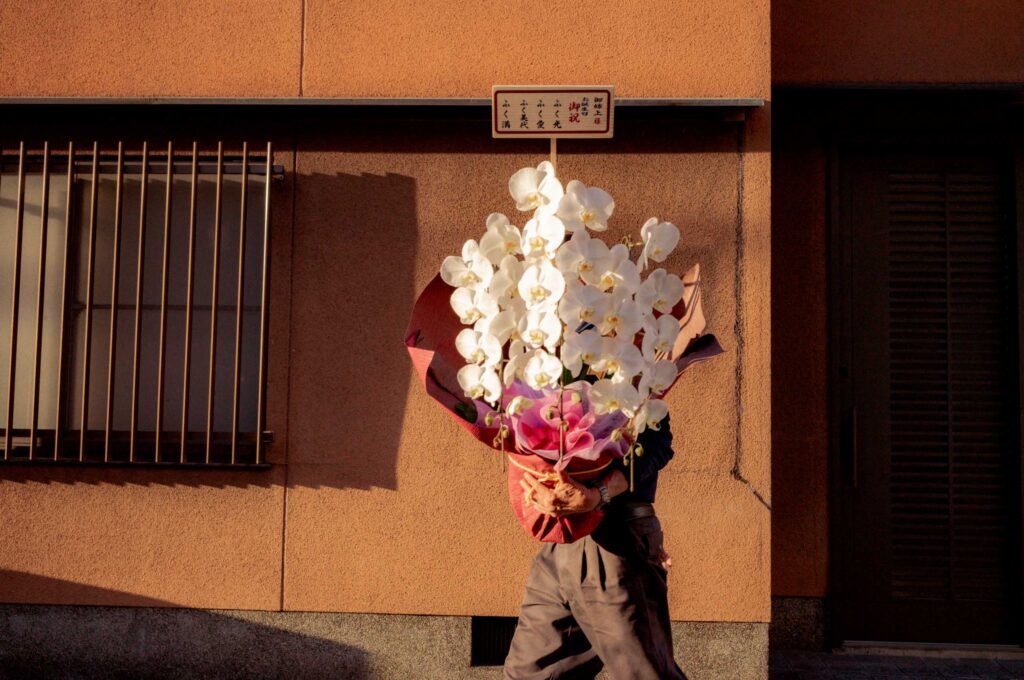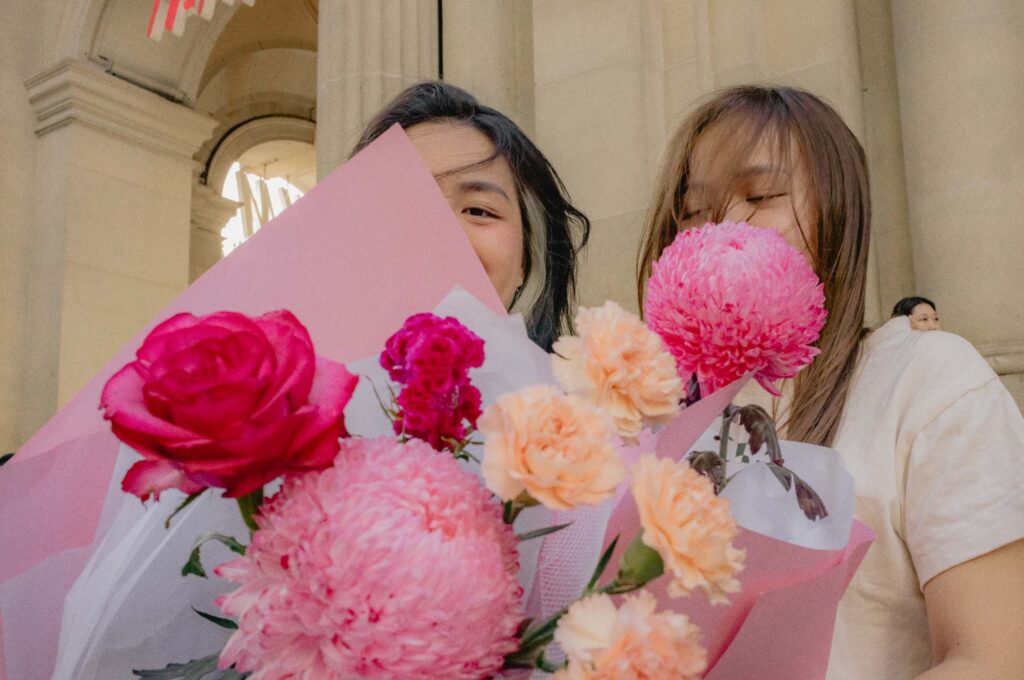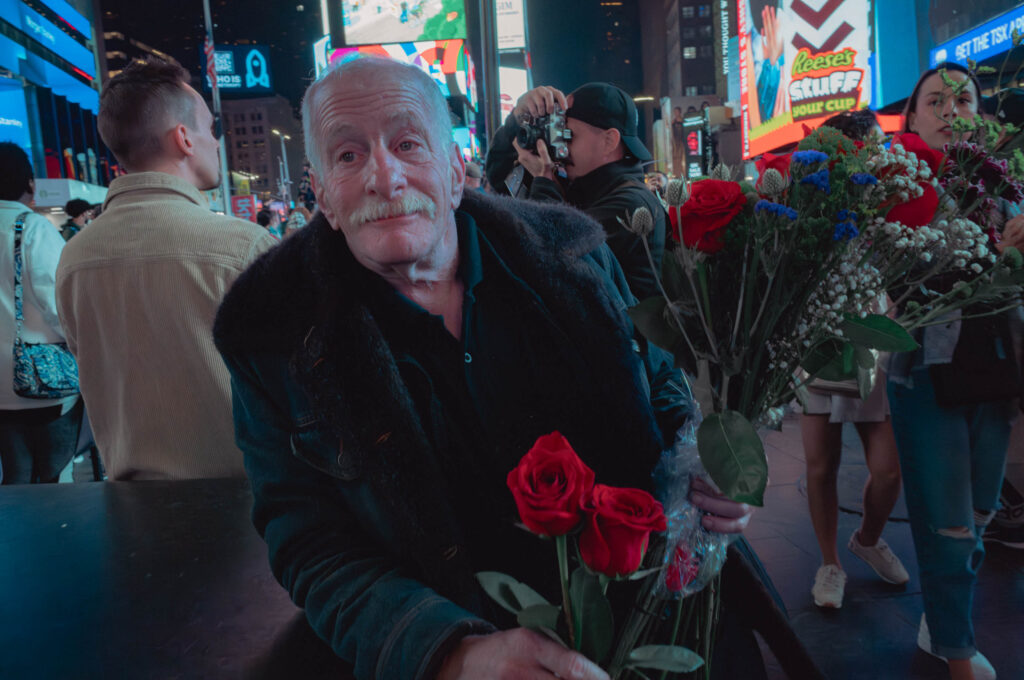Floral Footpath tracks flowers in motion, blooms carried through the city like contraband or prayer. These aren’t arrangements in vases. They’re loose stems clutched on subway platforms, wrapped bouquets cradled against chests, artificial flowers and visual representations echoing off billboards. The series treats them as loaded objects, carriers of intent that shift meaning depending on who holds them and where they’re headed.
Against concrete and steel, the carried flowers operate as a visual syntax of human intention. A wrapped bouquet suggests anticipation; loose stems signal remembrance; a single bloom hints at intimacy. The images capture these unspoken messages, showing how flowers continue to function as markers of significant moments, even as their meanings shift between cultures and contexts. Within the frame, each arrangement becomes both personal talisman and public declaration.
The work positions these everyday acts within a broader examination of urban ritual and expression. Through careful observation of how people transport and present flowers, the series reveals patterns of meaning embedded in seemingly simple gestures. These fleeting encounters—between nature and city, tradition and immediacy, private sentiment and public space—speak to how we infuse ordinary movements with significance. Floral Footpath invites viewers to consider how these modest yet deliberate acts of carrying beauty through the city create essential counterpoints to urban austerity.















